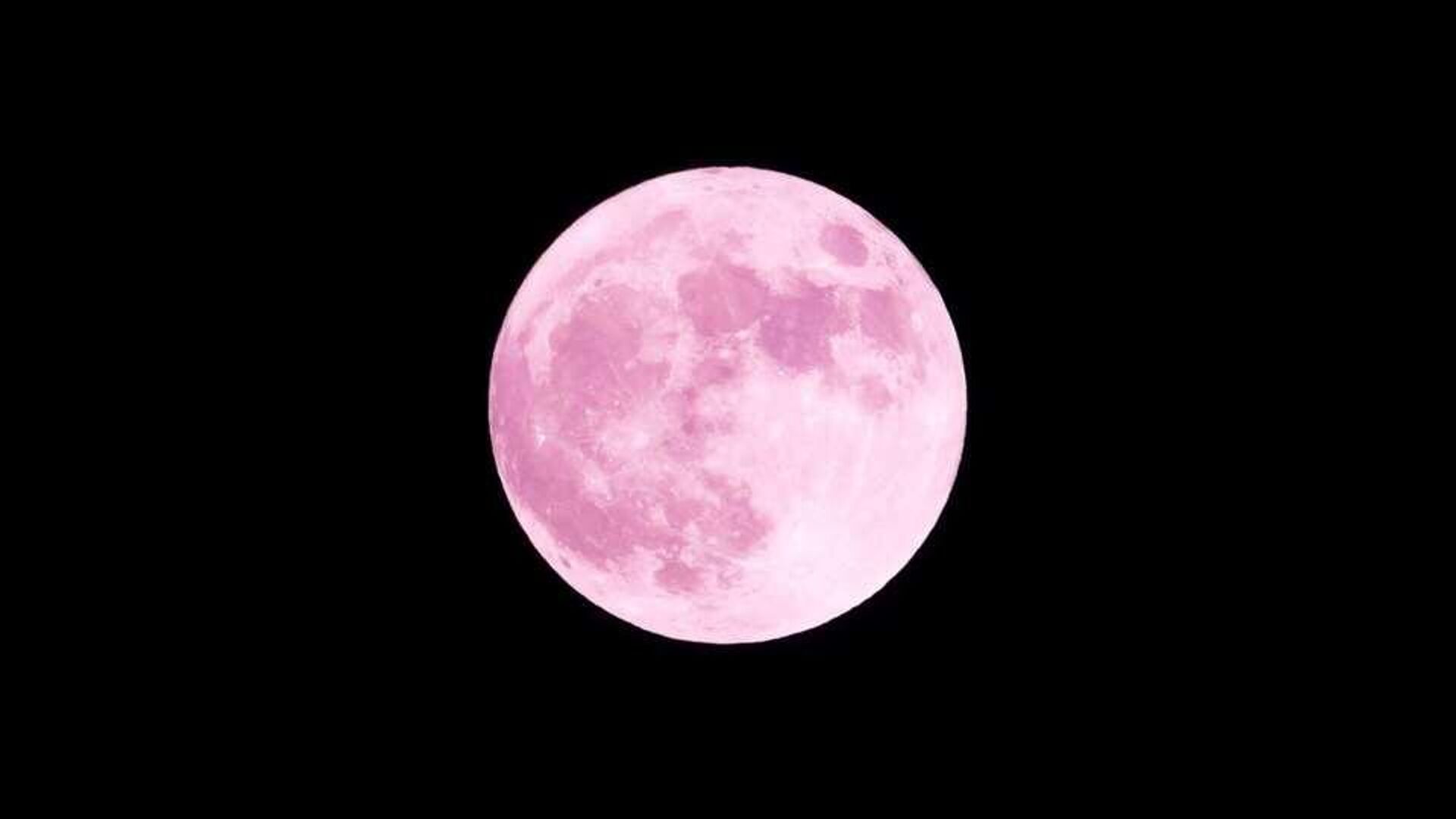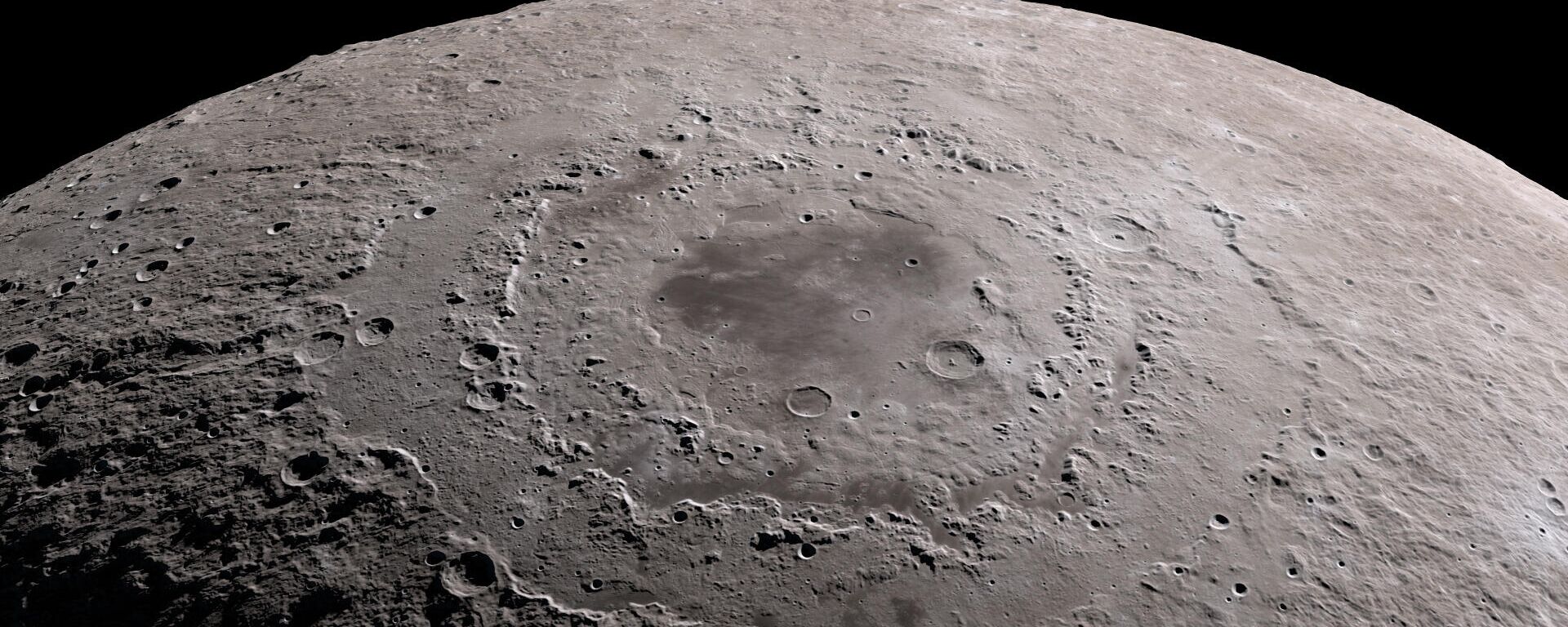https://sputnikglobe.com/20220818/new-evidence-supports-theory-that-the-moon-was-once-part-of-earth-1099715016.html
New Evidence Supports Theory That the Moon was Once Part of Earth
New Evidence Supports Theory That the Moon was Once Part of Earth
Sputnik International
The Moon has been studied by humans since we first looked up at the night sky, but its origins remain a mystery. Further evidence supports the theory that the... 18.08.2022, Sputnik International
2022-08-18T02:52+0000
2022-08-18T02:52+0000
2023-04-21T10:42+0000
science & tech
moon
astronomy
https://cdn1.img.sputnikglobe.com/img/07e6/06/0e/1096297306_0:0:960:540_1920x0_80_0_0_54fbd33923ee55380a6406186b10d7a7.jpg
The prevailing theory among scientists is that around 4.5 billion years ago when the Earth was still forming and was covered in molten lava, it was struck by an object thought to be roughly the size of Mars known as Theia.It is believed that Theia was destroyed in the process and Earth lost a significant portion of its mass. The gravitational pull of the remains of Earth then held debris from the event in its orbit which quickly, perhaps in less than 100 years, formed into the Moon.Now, thanks to new research coming from the Swiss Federal Institute of Technology in Zurich, we have more evidence to back that up. Patrizia Will led a group of researchers in studying six lunar meteorites discovered in Antarctica in the early 2000s.Inside she found small glass beads containing helium and neon that were formed during volcanic eruptions during the Moon’s early life. These gases are called noble gases because of their relatively low volatility. They are believed to have originated from Earth, inherited when the Moon was created in the aforementioned massive impact.Scientists believe that because of the amount found in moon rocks and lunar meteorites, they must have come from Earth. The theory is that after the great collision, noble gases floated around Earth while superheated to thousands of degrees. The Moon formed at the same time and much of the noble gases settled in and on the Moon.Had the gases come from elsewhere, like dust traveling on solar winds, scientists would expect there to be far less of it.Despite their relative abundance, they're still fairly rare, and no study had been able to prove the existence of the gases in lunar meteorites before.Will was able to do so by weighing individual molecules to determine the makeup of chemical substances using an advanced mass spectrometer from the Noble Gas Laboratory at ETH Zurich.Scientists are also trying to figure out how the noble gases got to Earth in the first place. There are two prevailing theories: that they were delivered here by comets and meteorites, or that they were present in a nebula cloud when the Sun was still young, and while Earth was forming, it pulled them in.The plan is to look for other noble gases like krypton and xenon. If they are found on lunar meteorites and similar instances of the gases are found in other meteorites, then that would suggest that Earth likely got its noble gases from collisions early in its life. If not, that would lend more weight to the nebula theory.The study’s authors say they found some evidence of krypton and xenon on the lunar meteorites, but more research will be required to confirm that.
https://sputnikglobe.com/20220727/beat-the-heat-by-traveling-to-the-moon-scientists-discover-pits-that-stay-63--all-year-1097868250.html
https://sputnikglobe.com/20220807/best-physical-models-cant-fit-the-data-radio-bursts-detected-in-space-defy-existing-theories-1099359972.html
Sputnik International
feedback@sputniknews.com
+74956456601
MIA „Rosiya Segodnya“
2022
News
en_EN
Sputnik International
feedback@sputniknews.com
+74956456601
MIA „Rosiya Segodnya“
Sputnik International
feedback@sputniknews.com
+74956456601
MIA „Rosiya Segodnya“
science & tech, moon, astronomy
science & tech, moon, astronomy
New Evidence Supports Theory That the Moon was Once Part of Earth
02:52 GMT 18.08.2022 (Updated: 10:42 GMT 21.04.2023) The Moon has been studied by humans since we first looked up at the night sky, but its origins remain a mystery. Further evidence supports the theory that the Moon was once part of the Earth.
The prevailing theory among scientists is that around 4.5 billion years ago when the Earth was still forming and was covered in molten lava, it was struck by an object thought to be roughly the size of Mars known as Theia.
It is believed that Theia was destroyed in the process and Earth lost a significant portion of its mass. The gravitational pull of the remains of Earth then held debris from the event in its orbit which quickly, perhaps in less than 100 years, formed into the Moon.
Now,
thanks to new research coming from the Swiss Federal Institute of Technology in Zurich, we have more evidence to back that up. Patrizia Will led a group of researchers in studying six lunar meteorites discovered in Antarctica in the early 2000s.
Inside she found small glass beads containing helium and neon that were formed during volcanic eruptions during the Moon’s early life. These gases are called noble gases because of their relatively low volatility. They are believed to have originated from Earth, inherited when the Moon was created in the aforementioned massive impact.
Scientists believe that because of the amount found in moon rocks and lunar meteorites, they must have come from Earth. The theory is that after the great collision, noble gases floated around Earth while superheated to thousands of degrees. The Moon formed at the same time and much of the noble gases settled in and on the Moon.
Had the gases come from elsewhere, like dust traveling on solar winds, scientists would expect there to be far less of it.
Despite their relative abundance, they're still fairly rare, and no study had been able to prove the existence of the gases in lunar meteorites before.
Will was able to do so by weighing individual molecules to determine the makeup of chemical substances using an advanced mass spectrometer from the Noble Gas Laboratory at ETH Zurich.
Scientists are also trying to figure out how the noble gases got to Earth in the first place. There are two prevailing theories: that they were delivered here by comets and meteorites, or that they were present in a nebula cloud when the Sun was still young, and while Earth was forming, it pulled them in.
The plan is to look for other noble gases like krypton and xenon. If they are found on lunar meteorites and similar instances of the gases are found in other meteorites, then that would suggest that Earth likely got its noble gases from collisions early in its life. If not, that would lend more weight to the nebula theory.
The study’s authors say they found some evidence of krypton and xenon on the lunar meteorites, but more research will be required to confirm that.





